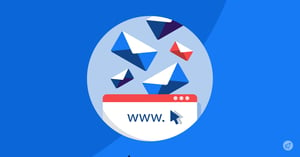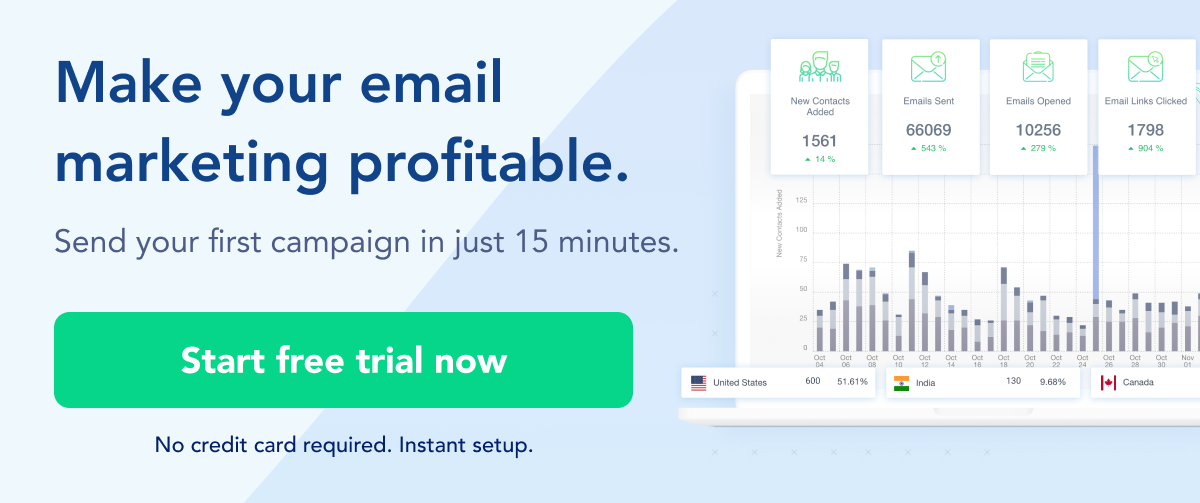
What is Email Throttling?
Sometimes, your ISP (internet service provider) will try to control the rate at which emails are sent from a particular sender or IP address. This is done to manage server loads and prevent abuse. However, it may sometimes be problematic for a sender who does a lot of outreach.
So, today, we’ll talk a bit on the subject matter to explain why this is necessary and how you can circumnavigate it if you feel like it’s slowing down your email marketing outreach.
Table of Contents
1. Why do ISPs use throttling?
Email service providers use throttling for many reasons, and they all make sense regarding the bigger picture.
Their main purpose is to prevent spam. After all, spammers are the most likely to trigger these alarms, seeing as how they’re the ones sending the most emails. The problem is that massive companies with email automation platforms can send 50.000 to 100.000 emails daily, which may sometimes trigger these red flags.
Of course, throttling will mostly focus on how many emails you send per recipient, not in general, which is a massive difference. Any sensible strategy involves a reasonable outreach rate per client either way. This has something to do with your deliverability because the recipient’s ESP may start flagging you as spam even if you change your strategy later on.
Then, there’s the issue of maintaining server resources. After all, the load of email marketing on servers can be far more resource-heavy than expected. This way, you’re also given a limited share of server use, which helps keep things more stable.
Indirectly, it’s also supposed to help save face in the eyes of your clients. After all, if you spam them, they’ll flag you or just have a much worse opportunity about you.
2. What factors affect email throttling?
The most important factor in determining whether your emails are getting throttled or not is definitely the frequency of sent emails. Now, if you maintain a reasonable send rate over time and then gradually increase, you’ll be seen as much less suspicious than if you were just to spike your email sending rate.
Then, there’s your reputation as a sender. Look at it this way: if you have a prior history of spam-like behavior, your own criteria will be much harsher, and you’ll have a lot less space for errors. At the same time, responsible behavior in the past will give you some more leeway.
Then, there are many technical factors to take into consideration. For instance, there are many authentication mechanisms that you can use to increase your email deliverability. Also, remember that to avoid abuse (in the form of just making a new email), your IP address will also have its reputation (and ranking).
The condition under which your emails will be throttled may be specified under ISP or ESP policies. Unfortunately, no one ever reads these. So, make an exception to understand what’s going on.
Poor email content will also ruin your chances and increase your bounce rate, which is one of the most significant SEO ranking factors.
3. What are some common email throttling methods?
So, what does email throttling look like in practice? Well, there are several ways in which this topic is approached.
First, there’s connection throttling, which the ISP often issues. This happens when a suspicious IP address is noticed, and it’s a sort of preservation tactic used to protect the server from too many concurrent connections.
Next, there’s the concept of content-based throttling. This is the most accurate and the most serious type of email throttling because if you’re suspected of sending spam content or malicious content, the ban may be permanent. You’ll get blacklisted and have serious trouble rejoining. One of the ways to improve this is to ensure that all the links and attachments provide something of value. According to specialists behind a renowned Webflow enterprise agency, the quality of the target is often vital to the bounce rate and the way content is perceived.
Then, there’s the rate limit. This one’s the most fair, but it’s also not very reliable. You see, this can limit the number of emails that can be spent per minute, but many systemic emails are always arriving in huge volumes.
Then, there’s burst throttling. This is a situation where you control the email delivery rate and prevent spikes in traffic. This means that the user starts with the default settings, but the rate gradually decreases as they send more and more.
4. What are the best practices to avoid email throttling?
Now that you understand how or why you can be throttled, it might be a good idea to focus on how to avoid this happening. Some practices are known to provide great results.
- Maintaining a positive sender reputation: First, you must ensure that you play it fairly and transparently. Make an amazing subject line and use branded or human-looking emails to increase your open rates. The ESP monitors open rates and click-through rates, and they’ll affect the way it sees the sender, even if their send rates are somewhat higher.
- Gradually increasing email send volume: Next, you need to understand that ESP is never observing your current activity in a vacuum (unless you really go over the top). Therefore, if your current email output volume is not big enough, you could set your goal and slowly work toward achieving it. In other words, if you gradually increase email send volume, the algorithm won’t see it as alarming.
- Monitoring and adjusting throttling strategies as needed: The most important thing to understand is that you’re not conscious about what you’re doing 100% of the time. Most people just intuitively make educated guesses on how many emails they’re sending, and even if they can see the number through an email marketing automation platform, they don’t focus on it too hard. You need to change that. If you believe that email throttling is a real problem, you need to try and be more mindful about what you’re doing.
It’s really hard to get email throttled for absolutely no reason. You would be surprised at how much trouble you can avoid by being more careful.
What are some benefits of send time optimization?
As mentioned, you must learn how to optimize the send time speed/frequency to get the most out of your email marketing. According to one study, by doing this right, you can improve the performance of your emails by a shocking 93%.
What does it mean to optimize your emails?
First, you need to personalize communication. Personalized emails are more likely to be engaged with, and an engagement rate already sends a good message to your ESP or ISP. It conveys that this email is not spam, further reinforcing your position.
Second, you must re-engage contacts already doing business with you. These emails have a different status, and it’s unlikely that this type of repeated interaction will raise any eyebrows. At the same time, you must time these emails well. Just because you already have a discourse with a recipient doesn’t mean you’re allowed (or invited) to start spamming them.
Most importantly, you don’t want to send emails in batches. Just take a look at it from the perspective of a recipient. If you do it like this, chances are that they won’t be able to go through them all, even with the best of intentions. How much time do they have to open every email if you send a dozen a minute? This way, you’re losing out on real potential.
Generally speaking, you’re aiming to optimize your campaigns, and this is one of the ways to do so.
What is intentional email throttling?
You don’t have to wait for an external factor to limit your email sending speed/frequency. We’ve already listed why this is bad and how these ISPs are regulating it, so why not do it yourself, preventively?
One of the reasons they list for email throttling is an attempt to protect your online reputation, but shouldn’t this be your job? Why not start with an intentional, preventive email throttling? Just find the best (safest, yet effective) tempo to send your emails at and make this your permanent policy.
It’s not like anyone who has a problem with a huge email volume output is sending them manually. Since you’re already using a platform, you can just program it to schedule these emails more effectively.
Conclusion
Just be more mindful about what you’re doing and approach your email marketing outreach as carefully as possible. After all, email throttling is about how many emails you send to a single recipient, not the total number of emails you send in a day.
Spamming never works; it ruins your reputation and might get you banned. In other words, there’s no benefit to it, only downsides.
Now, these are a few ways to avoid email throttling, but the strongest argument can be made for choosing the right email service provider and a great email automation tool. These will automatically pace your internet sending rate and protect you from accidentally falling into spam-like behavior. If nothing else helps, even a VPN can be useful.



